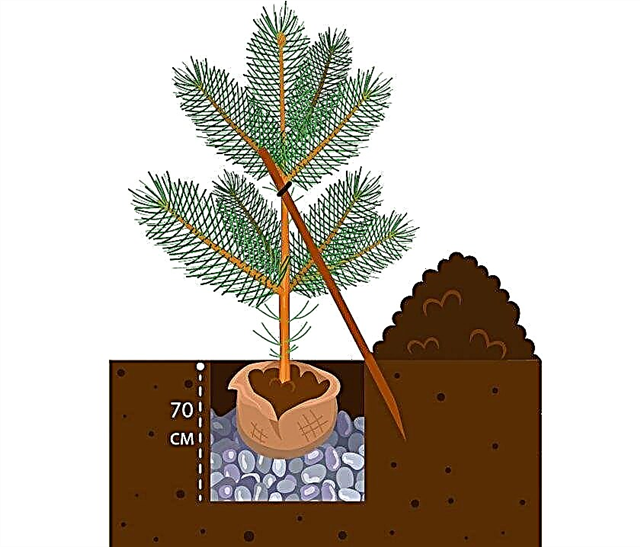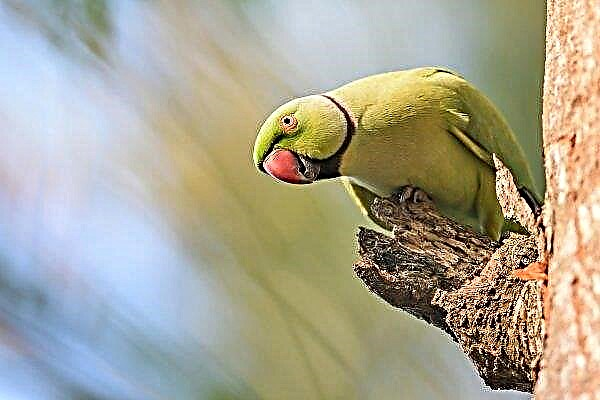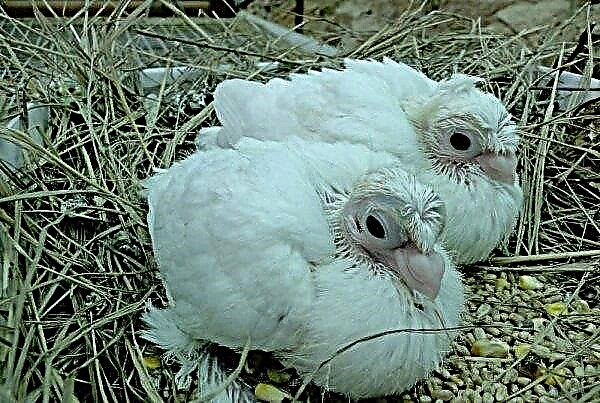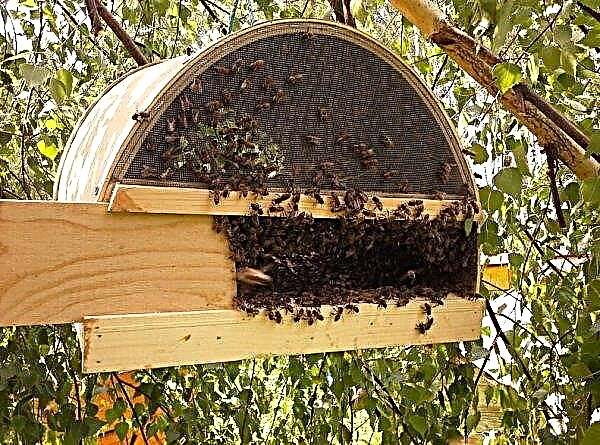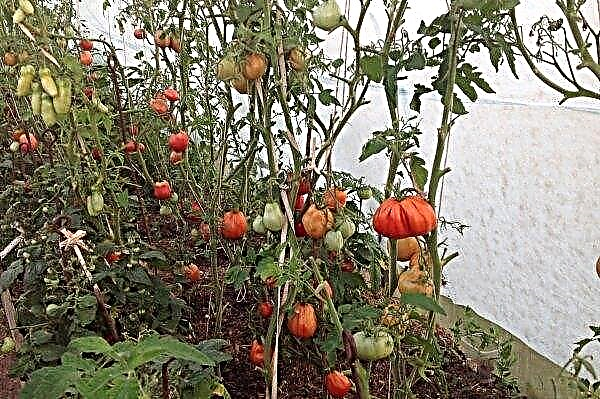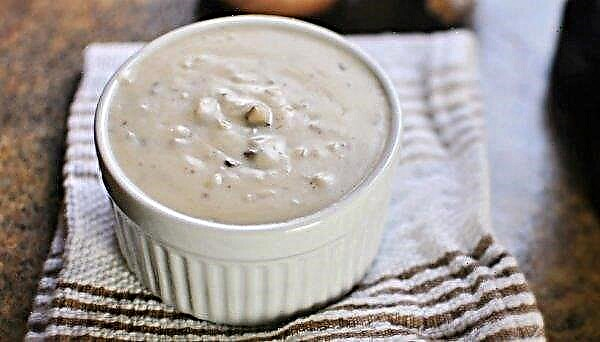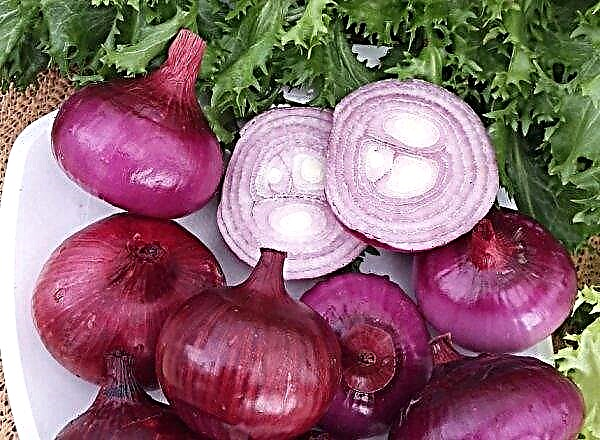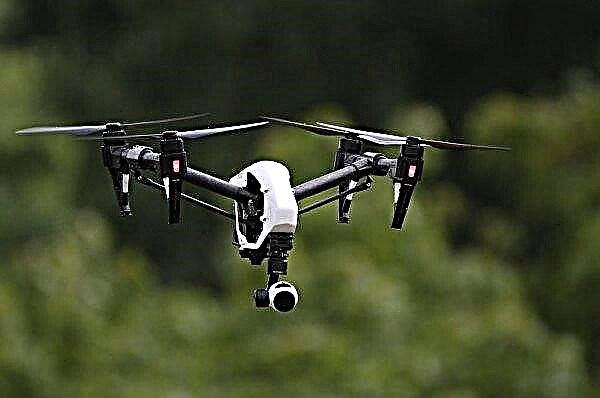One of the most original representatives of ornamental coniferous cultures is the spruce spiny Lucky Strike. Due to its unusual crown shape and compact size, this tree can be grown in small areas. The spruce is unpretentious in leaving, tolerates adverse environmental conditions and can be used in landscape design. A detailed description of the variety, the nuances of its planting and cultivation, as well as recommendations for combating diseases and pests of the culture are given further in the article.
Botanical tree description
Prickly spruce Lucky Strike (Picea pungens Lucky Strike) refers to dwarf conifers. Spectacular cones and fluffy crown of irregular shape give special decorative value to the tree.
Botanical description of spruce:
- Adult specimens grow up to 2–2.5 meters. The tree grows very slowly, and its maximum diameter does not exceed 1.5 m.
- The crown is thick and wide, has an irregular conical shape and is formed by short curved branches.
- Shoots have unequal length and grow in different directions.
- The needles are painted green with a slight bluish tint, have a shiny surface and a sharp tip.
- The needles are 2-3 cm long. The tips of young growths are light yellow.
- Fruiting is plentiful. For immature cones, the lilac color is characteristic, and as they mature, they turn brown.
- The fruits of spruce are large and can reach a length of 15 cm.
Did you know? In the village of Ruch, Ust-Kulomsky district of the Komi Republic, an unusual spruce grows. Her crown, as it were, consists of three trees growing from one trunk.
Origin of name
Prickly spruce Lucky Strike - the result of the work of Dutch breeders. This variety was obtained in 1983 in a nursery located in the city of Boscop (Netherlands). The literal translation of the Latin name of this tree is “lucky shot”. Lucky Strike quickly gained popularity among gardeners and has been in high demand for over 35 years.

Landing
The ideal place for planting Laki Strike spruce is a sunny and moderately humid area with light and loose slightly acidic soil (sandy or sandy loam). The roots of the tree do not respond well to stagnant water, so this variety cannot be grown on wetlands with ground water located near the surface.
Important! You can plant the Lucky Strike variety in open ground at any time of the year. It is recommended to buy planting material in specialized stores, choosing strong and healthy seedlings with a closed root system.
Step-by-step instructions for planting spruce:
- Dig a landing pit with a depth of 50–70 cm. Its diameter should be 1.5–2 times larger than the width of an earthen coma around the roots of a seedling.
- Lay drainage in the form of coarse sand, pieces of broken brick or pebbles at the bottom. The layer thickness should be at least 15 cm.
- Mix the soil obtained by digging a hole with turfy soil, peat and sand in a ratio of 2: 2: 1: 1.
- Place the roots of the sapling with an earthen lump in the recess. The root neck of the tree should be at the same level with the soil surface.
- Sprinkle a hole in the prepared nutrient mixture. Tamp the soil a little around the seedling with your hands.
- Pour the tree 40-50 liters of warm water.
- After completely absorbing the liquid, mulch the soil around the trunk with dry chips or wood bark.
 When planting several Laki Strike fir trees, the distance between adjacent specimens should be at least 2-3 m. This is necessary so that the wide crowns of the trees do not interfere with each other during growth.
When planting several Laki Strike fir trees, the distance between adjacent specimens should be at least 2-3 m. This is necessary so that the wide crowns of the trees do not interfere with each other during growth.
Spruce care
If the gardener picked up a suitable site for the seedlings of the Laki Strike spruce and correctly performed the planting procedure, then the young tree quickly takes root in the soil. Further care consists mainly in proper watering and periodic fertilizing. The irregular shape of the crown is the highlight of the variety, therefore, spruce is often grown without pruning, but some branches can be shortened if desired. Planting is also recommended to periodically inspect for the appearance of diseases and pests.
Did you know? Previously, special wine was made from spruce needles. Crews of sailing ships that had been at sea for a long time used this drink to combat scurvy.
Watering and feeding
The tree can tolerate short-term drought, but to maintain a decorative appearance in the summer months, it is recommended to carry out additional watering with a long absence of rainfall. To strengthen the immunity of spruce and its normal development, nutrients are also needed, which are added to the soil every year.
The basic rules for watering and top-dressing spruce varieties Lucky Strike:
- in hot and dry weather, irrigation is carried out once a week;
- watering one tree will require 10-12 liters of warm water;
- feeding for the first time immediately after planting, spending 40 g of nitroammophos on 1 m² of area;
- for adult specimens they use complex fertilizers for conifers purchased in a store - they are applied 2 times per season, following the instructions on the packaging.

Loosening and mulching
To improve the breathability of the soil and to facilitate the absorption of water during irrigation, it is recommended to loosen the earth around the fir trees periodically to a depth of about 5 cm This procedure is carried out after each irrigation of a tree or rain. To reduce evaporation of moisture and to keep the soil loose longer, a layer of mulch from dry pine bark is laid around the trunk.
In winter, the region of the trunk circle is mulched with peat. The thickness of the layer should be about 5 cm, and with the onset of spring it is simply mixed with the soil. When growing Laki Strike spruce in regions with harsh winters, the young tree is additionally covered with spruce branches. This protects the shoots from frostbite and prevents breaking of fragile branches under the weight of the snow cover.

Pruning
The crown of representatives of the Laki Strike variety is thick and has an irregular shape, so it can look messy. To correct the situation, it is recommended that the tree branches be cut periodically.
Important! Pruning weakens the spruce, so it is not recommended to shorten the shoots before the onset of frost.
The basic rules for this procedure are as follows:
- pruning is performed at the end of May or at the beginning of June - during this period active sap flow ends;
- without fail remove dry and damaged shoots;
- healthy branches are shortened as necessary, no more than ⅓ of the length;
- shoots are cut with a sharp secateurs so as not to injure the wood.

Possible diseases and pests
Subject to the above recommendations for care, representatives of the Lucky Strike variety are rarely affected by diseases and pests.
Did you know? If the spruce dies, then a new young specimen can grow from its roots. Thanks to this ability, the oldest coniferous tree in the world grows on the territory of Sweden, whose age is more than 9,500 years.
But if the gardener made mistakes during planting or growing conifers, the spruce can suffer from such infections and insects:
- Shute ate. The disease has a fungal nature, and its main sign is yellowing and drying of the needles. The needles acquire a brown color, and the shoots of the spruce dry out over time. Affected branches should be immediately cut and destroyed. To combat the infection, special drugs are used (for example, Fundazolum, Tsineb).

- Spruce deciduous hermes. The pest belongs to sucking insects and lays on the needles small red-yellow eggs, covered with a light fluffy coating. The appeared larvae feed on the juice of the shoots, causing yellowing and curvature of the needles. With the further development of the disease, the branches are deformed and die. To combat the pest, “Karbofos” or “Decis” are used.
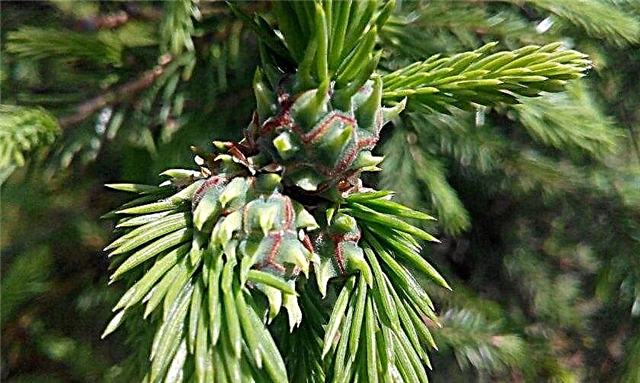
- Fir-tree bast beetle. This butterfly lays eggs on spruce shoots, and small caterpillars that appear appear to harm wood. They gnaw through the bark of a tree, making round through holes in it, and then penetrate deep into the trunk. As a result of infection, the branches begin to deform and dry out. To destroy the leaflet use "Karbofos".
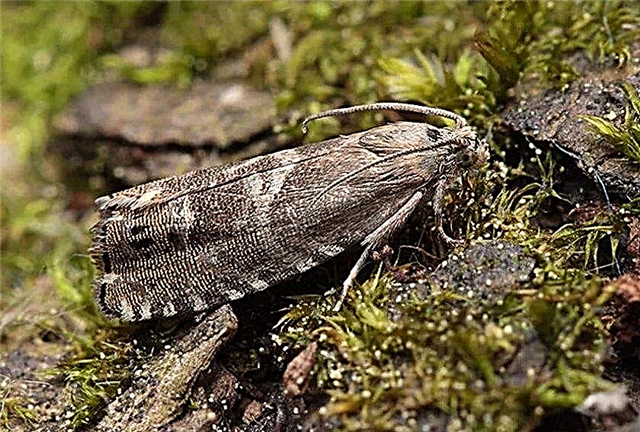
The main causes of infection of spruce plantings are improper soil care around the trees, excessive or insufficient watering, as well as lack of nutrients in the soil.To prevent the occurrence of these diseases and pests, you can use simple preventative measures:
- choosing the right site for landing;
- the use of quality planting material purchased in the nursery;
- compliance with irrigation and dressing;
- loosening of soil in the region of the trunk circle;
- timely sanitary pruning;
- compliance with the tree planting scheme;
- destruction of plant debris and fallen needles.
The use of wood in landscape design
Thanks to the decorative appearance of the spruce Lucky Strike, gardeners often plant it in order to decorate their summer cottages.

In landscape design, a tree can be used in various ways:
- for a single landing;
- as a decoration in rocky gardens;
- to create compositions with other coniferous and deciduous trees, shrubs;
- with the aim of forming a hedge;
- for landscaping small land plots;
- as a bright element of a flower bed.
Important! Thanks to its compact size, Spruce Lucky Strike can be grown even in a wide pot. For this reason, it is used for landscaping balconies and terraces.
With the help of a low and fluffy spruce Lucky Strike, you can create spectacular compositions at your summer cottage, and even a beginner gardener can cope with growing a tree. The recommendations and rules presented in the article will help to successfully plant seedlings, provide them with the necessary care, and also take timely measures to combat diseases and pests.





